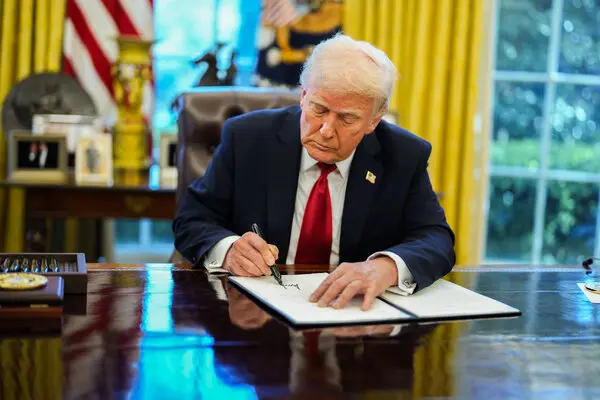In a dramatic shift that\'s sending shockwaves throughout the global economy, President Donald Trump’s aggressive trade policies—collectively branded as “Donald-25”—have ushered in a new era of economic turbulence. Following his re-election in 2024, Trump swiftly enacted a sweeping set of protectionist measures, dramatically increasing tariffs on a wide range of imported goods. Some tariffs have soared as high as 245%, targeting sectors ranging from electronics and automobiles to pharmaceuticals and consumer goods. These moves, designed to reduce America’s economic dependence on China and re-energize domestic manufacturing, have instead set off a cascade of economic consequences, both at home and abroad.
The scope and abruptness of these changes have startled economists and investors alike. International trade flows have slowed considerably, with a marked slump in imports and a decline in foreign tourism to the United States. The hospitality and retail sectors, which rely heavily on international traffic and imported goods, are reporting sharp drops in revenue. Global supply chains—still recovering from the lingering effects of the COVID-19 pandemic—are once again in disarray, prompting fears of prolonged shortages and rising prices.
In financial markets, the response has been swift and brutal. Major stock indices, including the Dow Jones Industrial Average and the S&P 500, have plummeted amid the uncertainty. Analysts point to a retreat in foreign direct investment, particularly from Europe and Asia, as international investors grow wary of the United States\' volatile economic policies. The dollar has weakened against other major currencies, while bond yields have fluctuated unpredictably, reflecting deepening concerns about the U.S. economic outlook.
Some experts are calling this a “mind virus” of protectionism, warning that it could trigger a global trend of economic isolationism. Nations that were once close trading partners are now reconsidering their ties to the U.S., forging new alliances and trade agreements that exclude American participation. Countries like Germany, Japan, and Canada have publicly criticized the tariffs and responded with retaliatory measures, deepening the economic divide.
Domestically, the fallout has been equally intense. While Trump’s core supporters initially praised the tariffs as a bold move to protect American jobs, public opinion has shifted as the real-world consequences have become more visible. Prices for everyday items such as electronics, food, and clothing have surged, squeezing middle- and lower-income families. U.S. manufacturers, unable to absorb the increased costs of imported components, have begun laying off workers or moving production overseas despite the administration’s intentions. The agricultural sector, once again caught in the crossfire of a trade war, is facing export restrictions and falling demand, prompting a wave of bankruptcies and rural economic distress.
The political backlash has been fierce. Trump’s approval ratings have declined sharply across multiple demographics, including among independent voters and suburban constituencies that were pivotal to his 2024 victory. Congressional Republicans, many of whom face reelection in 2026, are growing increasingly uneasy. Several have begun to distance themselves from the policy, with some going as far as openly criticizing the administration’s economic strategy.
Amid this growing unrest, talk of a third impeachment has begun to gain traction. While the formal process would be highly contentious and politically charged, multiple lawmakers from both parties are expressing concern about the legality and economic recklessness of the Donald-25 policies. Allegations of executive overreach, especially in the imposition of tariffs without sufficient congressional oversight, are being investigated by House committees. The White House, meanwhile, is scrambling to defend its actions, blaming foreign governments and “globalist elites” for the economic instability.
The coming months will be critical. If the current trajectory continues—marked by inflation, recession warnings, job losses, and international alienation—the Trump administration may face the most serious domestic crisis of its tenure. What began as a bold nationalist economic experiment now risks spiraling into a full-blown political and financial disaster.
In a globalized world where economic interdependence is the norm, “America First” may have reached its most extreme and most perilous expression yet. As the U.S. attempts to navigate the consequences of Donald-25, the rest of the world watches with a mix of concern, caution, and quiet recalibration—redefining alliances and reevaluating the role of the United States as a stable economic partner.


















Elizabeth
This man
IDDRISU ABDUL WARIS
Ahh
Samuel Boafoh
The New Economic Crisis
Samforex
Good
Erry123
Eii this man